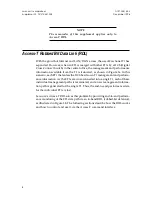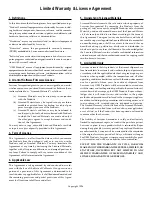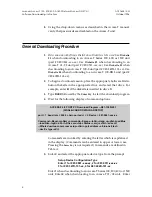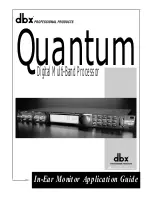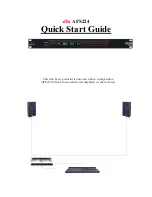
either 64 kbps or 56 kbps below the rate as set in the current map (depending
on how the
DTE—DTE PORT—RATE
parameter is set). Both transmit and receive
clock signals sent to the DTE port will be smooth clocks.
In Extra DS0 Mode, Access-T automatically uses the highest-numbered DS0 as
the data link. (For example, if you map DS0s 1-5 to DTE Port 1, DS0 5 will be
used to create the data link.) If the mapping is changed later, Access-T will
automatically reconfigure the RDL based on the new configuration.
Note:
To use the
XTRA DS0
RDL option, you must map at least 2
DS0s to DTE Port 1.
Robbed-Bit Mode
In Robbed-Bit Mode, one bit of one DS0 (i.e., 8 kbps of the fractional payload)
is taken for the RDL function. This results in a DTE port data rate which is 8
KHz below the rate as set in the current map. The clock signals (both transmit
and receive) sent to the DTE port by the Access-T will be gapped, with the gap
occurring at the RDL bit position. In other words, there will be one missing
clock cycle every 125 microseconds, regardless of DTE rate. Because of this
gapping, the
DTE PORT
option of the
SYSTEM —MASTER CLOCK — SOURCE
cannot be used
when running in Robbed-Bit Mode.
Enabling the RDL
To enable or disable the RDL, perform the following steps:
1.
Select the
DTE—DTE PORT—RDL
menu path.
2.
Select the desired RDL operation mode (
OFF
,
XTRA DS0
, or
ROBBED BIT
).
3.
Press the Esc key.
RDL DTE Alarms
In order to monitor the performance of the RDL, Access-T has two new DTE
alarms, as follows:
•
Port 1 LOF:
Access-T declares Port 1 LOF (Loss of Frame) when the
RDL register byte declares an OOF (Out Of Frame) condition for at
least 2.5 consecutive seconds.
ACST-0351-S53
Larscom Incorporated
December 1996
Supplement 3, ACST-0351-005
11












